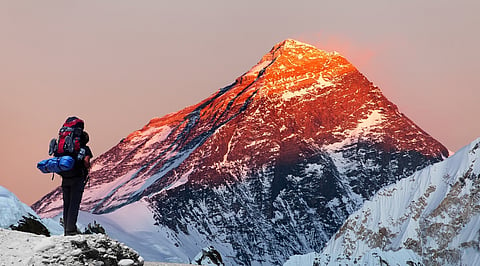
- Destinations
- Experiences
- Stay
- What's new
- Celebrating People
- Responsible Tourism
- CampaignsCampaigns
- Subscribe
- Buy Now

Starting September 2025, Nepal will increase Mount Everest climbing permit fees by 36 per cent, reportedly marking the first price hike in nearly a decade. This change is expected to impact mountaineers, trekking agencies, and Nepal’s tourism industry. But why is Nepal making this move, and how will it affect Everest expeditions? Here’s why:
Nepal's government has revised climbing permit fees for all seasons. The spring season (March-May) attracts the most climbers and will see the highest hike, rising from USD 11,000 to USD 15,000. Autumn (Sept–Nov) fees will increase from USD 5,000 to USD 7,500, while winter (Dec–Feb) permits will go from USD 2,500 to USD 3,750. This fee adjustment aims to manage overcrowding, improve safety, and fund environmental conservation efforts on Everest.
Addressing Environmental Concerns: Everest has been struggling with waste accumulation and pollution due to the increasing number of climbers. The additional revenue from permit fees will go towards stronger waste management policies to ensure climbers remove their trash. Better monitoring and cleanup programs to preserve Everest’s delicate ecosystem. This also includes conservation initiatives to protect biodiversity and the mountain’s natural beauty.
Controlling Overcrowding For Safety: In recent years, overcrowding on Everest—especially during the peak spring season—has led to traffic jams, long waits at high altitudes, and increased fatalities. By raising fees, Nepal hopes to limit the number of climbers, reduce congestion and ensure that only well-prepared and experienced climbers attempt the ascent. The idea is to reduce accidents and fatalities caused by overcrowding and delays.
Improving Infrastructure And Rescue Operations: The additional revenue will be used to enhance weather forecasting for better planning and upgrade rescue facilities and response times to prevent fatalities.
Expeditions will become more expensive, making Everest a less accessible climb for some.
Fewer climbers may lead to a safer and more enjoyable experience for those who attempt the summit.
Stricter waste and safety regulations will ensure a cleaner and more sustainable climbing environment.
The trekking and tourism industry may see a shift, with fewer budget expeditions but more high-quality guided climbs.
Mountain villages dependent on tourism may benefit from better infrastructure and jobs.
(With inputs from multiple reports)
